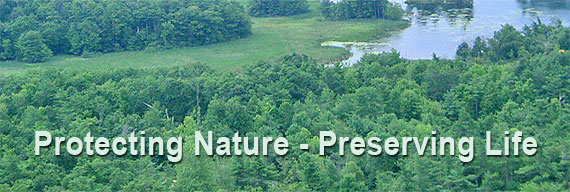|
Glaciation, geography, weather and time have
produced a rain forest of great age and complexity. The stage was set
during the last Ice Age, when glaciers carved broad U-shaped valleys
out of west flowing river courses in the Hoh, Queets, and Quinault
valleys. Geography and climate are also scene builders along a narrow
strip of land about 2,000 miles long from coastal southeast Alaska to
southern Oregon. Here a drama of life, death and rebirth has been
reenacted for millennia.
The Rain
Falls, the Curtain Rises!
Enormous amounts of precipitation, mild
winters and cool summers nurture the abundant green these rainforests
are famous for. Shrubs like salmonberry and huckleberry, eight species
of ferns, and a variety of mosses and other plants carpet the forest
floor, adding color and texture to the stage. Bigleaf maple draped in
spikemoss and vine maple dripping with cat tail moss fashion a
primordial scene. Some describe it as a Tolkein landscape or a Disney
set. What feeling does this forest invoke in you?
Cast of Characters
As this melodrama of life and death unfolds,
complex relationships develop with no conflict between good and evil;
the characters work together as one.
• Rain averages 140 inches annually! Even during the fairly dry summer
months, the valleys trap moist fog.
• Large, old trees such as Sitka spruce and western hemlock take center
stage, some reaching over 200 feet tall and living over 500 years. The
plot thickens when powerful winter storms bring down large,
shallow-rooted trees each year. Death now sets the stage for life.
• Dead wood plays a key role. Coastal temperate rainforests in North
America produce the largest accumulation of organic (living or
once-living) matter on the planet, surpassing even the tropical rain
forest.
• Nurselogs open the next act. Mosses and seedlings colonize downed
trees. Ninety-six percent of all spruce and hemlock seeds get their
‘big break’ when they land and germinate on a nurselog. Competition is
intense; only one seedling in 10,000 will survive to take its turn
center stage.
• Epiphytes, “plants that grow upon plants” use tree limbs as props and
do not harm the trees. More than 130 species of mosses, lichens,
liverworts and ferns costume the trees, adding to the forest's
character.
All the Forest’s a Stage
Cougars, black bears, elk and small mammals
such as squirrels and moles give birth and die upon this stage.
Standing dead trees shelter dozens of species including bats and
woodpeckers. River otters, salmon, frogs, salamanders and other aquatic
species play out their lives in the rivers and streams.
Behind the Scenes
Set designers. Roosevelt elk keep the
understory open by browsing and trampling, allowing a rich variety of
plants to flourish on the forest floor.
Stage hands work unseen by the human audience and not always
appreciated! No one knows how many species of insects crawl on or under
the forest floor, decomposing and recycling forest litter. When
beetles, termites and ants bore into weak or dead trees to feed and lay
eggs, they carry spores of fungus into the tree, conntinuing the decay
process.
Up in the rafters. Microscopic fungi, algae, yeast and bacteria
colonize billions of needles in the canopy, and in turn are grazed upon
by mites and springtails, while predacious insects feed on the leaf
eaters. This domain, called the “scuzz,” supplies nutrients to the
forest and repels harmful insects.
The sound stage. The simple haunting notes of the varied thrush, the
complex melody of the winter wren and the staccato beat of the pileated
woodpecker
permeate the set. Rain can fall gently or drown out all other sound,
sometimes accentuated by the thunder-like crash of giant falling trees.
Special effects. Sun and rain provide ever-changing
moods as soft light filters through the mists. To some this ethereal
quality creates a place for solitude,
reflection and renewal. To some early pioneers, this forest felt dark
and foreboding.
The Final
Scene
The ending is not written yet. This drama of
life, death and rebirth might continue for millennia, until nature, or
humans, alter its course. Those who fought to establish Olympic
National Park in 1938––largely to protect these incredible rainforests
and the elk that shape them––hoped for a never-ending story. Although
we may never know what triumphs or tragedies lay ahead, we all play a
role in how this story might unfold.
The World Stage
This forest benefits the world by taking in
carbon dioxide, replenishing Earth’s oxygen and storing water and
carbon. Fallen trees also supply nutrients to the rivers and ocean, and
become the huge beach logs that anchor the coastline. This rich forest
preserves incredible biodiver-sity of plants and animals. Its global
significance has been recognized by the park's designation as a World
Heritage Site and International Biosphere Reserve.
|













